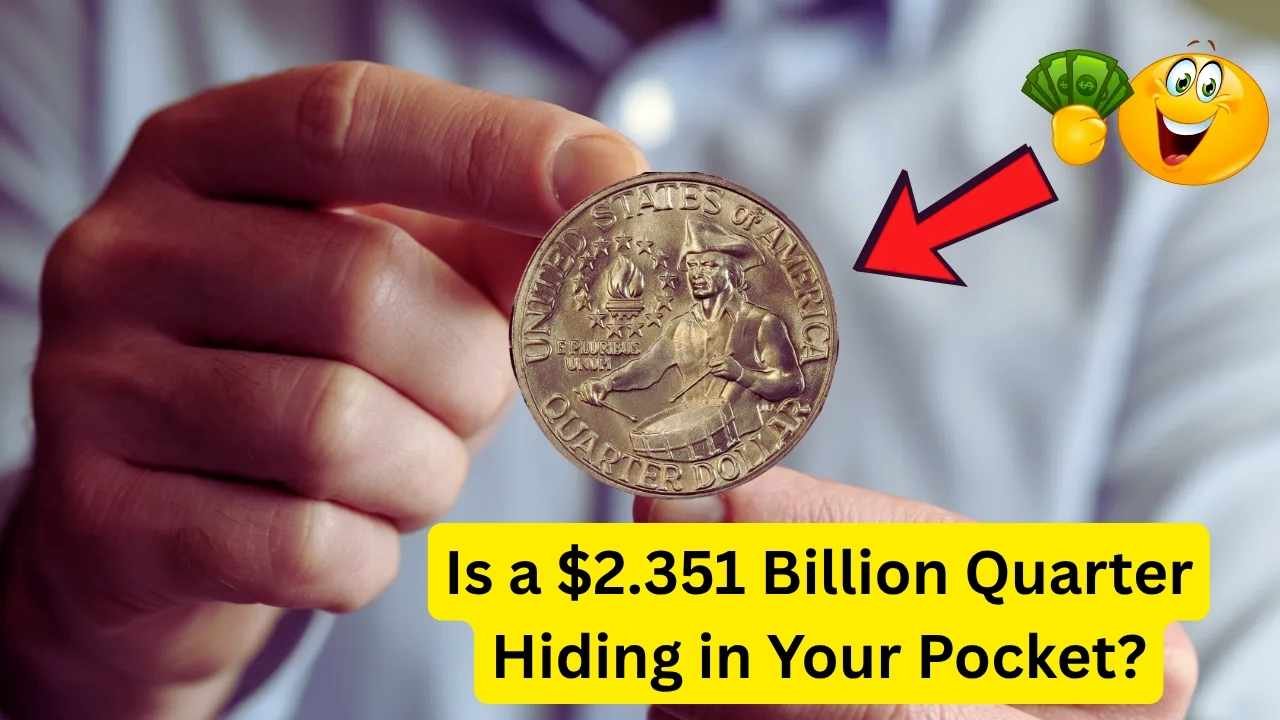A simple quarter from 1976, known as the Bicentennial Quarter, is causing a huge stir with claims it could be worth $2.351 billion. This coin might still be in circulation, sparking a frenzy among collectors and regular folks checking their change. With its unique design and wild rumors, let’s dig into what makes this quarter so talked about, why its value is questioned, and how to spot one.
A Coin Celebrating America’s Big Birthday
The Bicentennial Quarter was minted in 1975 and 1976 to mark America’s 200th anniversary. It features George Washington on the front with a “1776-1976” date and a colonial drummer boy on the back, designed by Jack L. Ahr. Over 1.6 billion were made in Philadelphia, Denver, and San Francisco, so they’re super common. But some rare versions with errors or special features have collectors dreaming big. The idea that a quarter from your change could be worth billions sounds like a fairy tale, but it’s got people curious.
The $2.351 Billion Price Tag: Fact or Fiction?
The claim that a Bicentennial Quarter is worth $2.351 billion has spread like wildfire online, but experts say it’s likely a myth. No coin has ever sold for anywhere near that amount, and the figure seems to come from typos, hoax listings, or exaggerated social media posts. The most valuable Bicentennial Quarter, a 1976-S silver proof in top condition, sold for $19,200 at auction. Rare error coins, like double dies or wrong metal strikes, can fetch thousands, but nothing close to billions. Still, the rumor has everyone checking their quarters, hoping for a miracle.
| Key Details of Valuable Bicentennial Quarters | |
|---|---|
| Year | 1975-1976 |
| Mint Marks | None (Philadelphia), D (Denver), S (San Francisco) |
| Valuable Types | Silver proof, error coins |
| Highest Known Sale | $19,200 (1976-S Silver Proof) |
| Rumored Value | $2.351 billion (unverified) |
How to Spot a Rare Bicentennial Quarter
While a $2.351 billion quarter is probably a fantasy, some Bicentennial Quarters are worth good money. Here’s what to look for:
- Check the date: It should say “1776-1976.”
- Look for the mint mark: An “S” means it’s from San Francisco, often more valuable if silver.
- Spot errors: Use a magnifying glass to check for doubled letters or blurry designs.
- Test for silver: Silver coins have a brighter shine and a distinct ring when dropped.
- Check condition: Uncirculated, shiny coins are worth more.
If you find something unusual, don’t clean it—cleaning lowers value. Take it to a certified coin dealer or grading service like PCGS or NGC for a real check.
Stories of Coin Hunting Fever
The $2.351 billion rumor has sparked stories of people finding valuable coins. In 2020, a double denomination Bicentennial Quarter struck on a dime sold for $9,200. Another, a 1976-D with a double die error, went for $8,400 in 2023. These real finds keep the excitement alive, even if the billion-dollar claim is fake. Social media videos and clickbait headlines have fueled the craze, with folks sharing tips on checking change jars or cash registers. It’s a modern-day treasure hunt that’s got everyone hooked.
Why It’s Still Out There
Bicentennial Quarters are still in circulation because so many were made. Back in the 1970s, no one thought they’d be worth much, so they were spent like regular change. Some might be in piggy banks, old wallets, or even your pocket. While the $2.351 billion story is almost certainly false, rare errors or silver versions could still turn up. Coin experts say to keep looking, but stay realistic—verify any find with a pro before dreaming of billions. This craze shows how a simple coin can capture America’s imagination.
The Bicentennial Quarter, even without a billion-dollar price, is a cool piece of history. The viral $2.351 billion tale might be a bust, but it’s got people excited about coin collecting. So, next time you get a quarter, give it a quick peek. You might not find a fortune, but you could uncover a small treasure worth celebrating!
